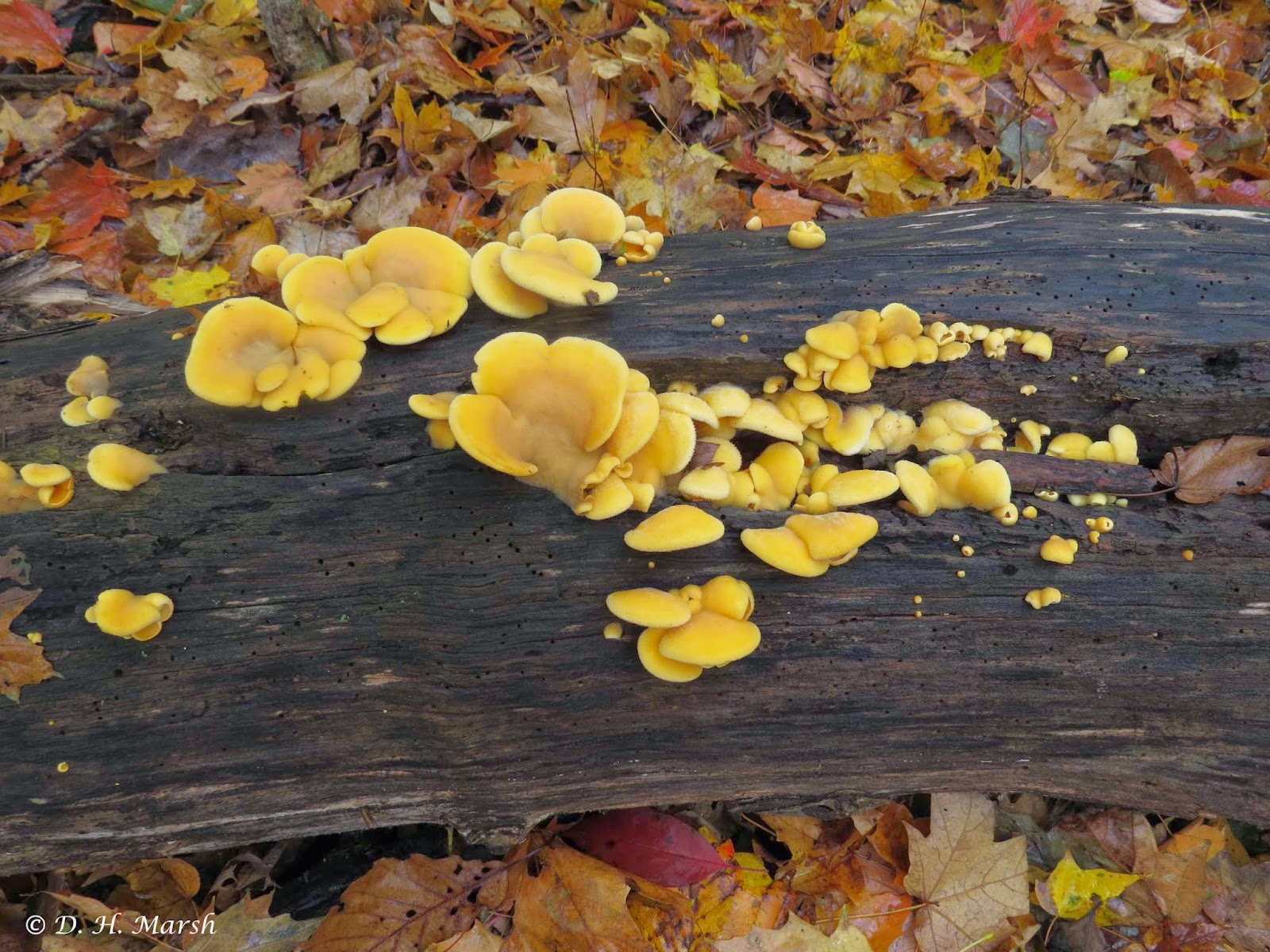 |
| http://www.touring-ohio.com/history/ohio-5-regions.html |
Exceptional hiking trails,
dramatic rock formations,
and lots of interesting plants and critters draw us back often to the area.
 |
| This is a moth caterpillar called Hitched Arches. |
One of the best and most popular trails in the county is the 2-mile Rim Trail at Conkle's Hollow State Nature Preserve. Several flights of stairs have been constructed to safely allow visitors to climb up to the top of the cliffs. The trek is well worthwhile, resulting in fantastic views of the valley below and the sandstone cliffs that line the hollow:
The trail passes right along the edge of the cliff
and gives views deep into the rocky recesses of this hollow which is graced by hemlock trees both large and small:
We usually think of sugar maples as the source of most fall color, and indeed they add brilliant yellows and oranges to the autumn landscape. But there are others equally worthy of attention, and the sourwood is one of my favorites. They require acid soil (which is why the one in my yard is only about a foot tall after about 5 years), so in the acidic soils of the Hocking Hills their size and red fall color can be magnificent:
This member of the heath family has lovely sprays of creamy white flowers in early summer, and the sprays persist into fall and even winter, bearing seeds for the next generation of sourwoods:
Yesterday we hiked the Hemlock Trail in Clear Creek Metro Park, and even though their colors were fading the small sourwoods added a lot of beauty to the path.
I love the way the leaves of beech trees turn earthy colors of brown and yellow in the fall:
The sassafras trees have been magnificent this year, thanks to the pigment anthocyanin which take lots of sunshine to develop:
Red maples were gorgeous this year too:
The tall trees in the background above are tuliptrees; they lose their leaves early but their magnificent height makes up for the lack of fall color!
Of course I can't resist a sugar maple picture; here one is taking over an old log cabin:
Trees aren't the only sources of fall color, of course. Until this year I never realized how beautiful a common plant with the rather lowly name of dogbane can be in the fall:
And one of the brightest shrubs in the fall landscape is winged sumac, photographed at Clear Creek Metro Park:
And here is the lovely fall color of the maple-leafed viburnum:
Spicebush brightens the understory with its yellow leaves and scarlet berries:
We often think of fall as a season of dwindling life as winter approaches. But there are significant exceptions to this impression! In fall, the puttyroot orchid sends up its accordion-like leaf to take advantage of the increased sunlight available to it when the leaves are off the trees.
At first the leaf is vertical, allowing tree leaves to fall without covering it. Later, it is nearly horizontal, all the better to capture the winter rays of the sun. In early summer the leaf will wither as the blooms emerge.
Harbingers of next year's blooms are already apparent in the flower buds of the rhododendron:
Witch hazel, a small tree or shrub, is actually in flower right now:
And one of the coolest things about fall is the appearance of the buck moth. The only time the adult flies is October and into November, withstanding frosts and even early snows. We have seen many in the Hocking Hills in the past week, particularly along ridge tops with lots of oaks which are the caterpillar food plants. The males use their feathery antennae to detect female pheromones in order to find a mate and start the next generation. Our picture doesn't show much of the brilliant orange color on this critter's legs and abdomen, but trust me--it is amazing.
Some of the best fall scenes in the hills can be found along the hiking trails, but driving the roads is great as well. We had never driven the Thompson Ridge Road before this year, and we are glad we did:
We hardly knew which side of the road to look at!
Although I'm not thrilled at the prospect of winter approaching, I've loved being out and seeing the natural world prepare for the coming season, particularly in the Hocking Hills!

































